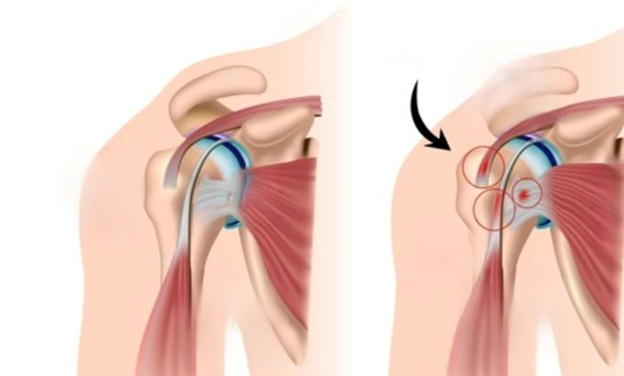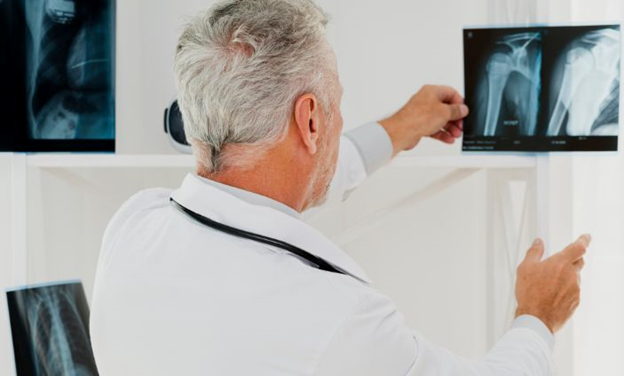Dr. rahul khanna
M.S. (ORTHO), FIASM, FIA
Specialist Joint Replacement, Arthroscopy & Sports Injury
Menu
Dr. rahul khanna
M.S. (ORTHO), FIASM, FIA
Specialist Joint Replacement, Arthroscopy & Sports Injury
Menu
Rotator Cuff Repair: Things You Need To Know About It
The rotator cuff is a group of muscles and tendons in the shoulder joint that provide stability and allow for a wide range of motion. When these tissues become damaged or torn, it can lead to pain, weakness, and limited mobility in the shoulder. Rotator cuff repair surgery is a common treatment option for individuals experiencing significant rotator cuff injuries.

Types of Rotator Cuff
Rotator Cuff Injuries
- Partial Thickness Tears
- Full-Thickness Tears
- Tendonitis
- Impingement Syndrome
Rotator Cuff Tears
- Supraspinatus Tear
- Infraspinatus Tear
- Subscapularis Tear
- Combination Tear
Rotator Cuff Conditions
- Rotator Cuff Tendinosis
- Rotator Cuff Tendinopathy
- Rotator Cuff Calcific Tendonitis
Diagnosis
Before undergoing rotator cuff repair surgery, a thorough diagnosis is essential. This typically involves a physical examination by a healthcare provider, along with imaging tests such as X-rays, MRI, or ultrasound to assess the extent of the injury and determine the most appropriate course of treatment.

Rotator Cuff Repair Procedures
Rotator cuff repair becomes an achievable choice when conservative measures including rest, physical therapy, and anti-inflammatory drugs are ineffective in relieving the pain. The goal of the treatment is to repair torn or damaged rotator cuff tendinitis to relieve pain and restore function. For the repair of rotator cuffs, there are two main techniques:
Open Surgery
The surgeon can directly access the problematic area with this conventional method, which involves a wider wound. Open surgery is successful, but it may require more time to heal and leave more apparent scars.
Arthroscopic Surgery
This minimally invasive procedure uses a tiny camera (called an arthroscope) to guide the surgeon through small cuts. In general, arthroscopic surgery results in less pain, less scarring, and a quicker recovery.
The Path to Recovery
Following rotator cuff injury, recovery is a long process that requires active patient involvement as well as medical supervision. This is a step-by-step manual for the healing process:
Post-Surgery Rest and Immobilization
A sling will be used to immobilize the shoulder right after surgery. For the healing process to start at this initial stage, rest is essential.
Physical Therapy
Physical therapy plays a crucial role in the healing process of the shoulder. Patients will be directed through exercises by a qualified physical therapist with the goals of strengthening muscles, increasing range of motion, and enhancing general shoulder function.

Pain management
Feeling pain is a normal aspect of healing. Pain and inflammation can be controlled with the help of the surgeon’s prescribed medications. To make necessary medication adjustments, it’s critical to have open lines of communication with the medical staff.
Gradual Reintroduction of Activities
The patient will progressively resume activities as the shoulder regains strength and flexibility. Depending on how quickly each person heals and the specifics of their injury, there may be differences in the timeframe for getting back to certain activities.
Consistent Follow-Up
To monitor development and quickly deal with any problems or setbacks, follow-up consultations with the surgeon and physical therapist are essential.
Home Exercise Program
Patients are frequently provided with a home exercise program to help them continue their recovery on their own after formal physical therapy appointments. Maintaining consistency in these workouts is essential for long-term results.
Understanding the Path Forward
Rotator cuff repair surgery is a highly effective treatment option for individuals with significant rotator cuff injuries. By understanding the diagnosis, procedure, and recovery process, patients can make informed decisions about their shoulder health and work towards a full recovery with the guidance of their healthcare team.
If you’re experiencing shoulder pain or limited mobility, schedule a consultation with a qualified healthcare provider to discuss your options for rotator cuff repair surgery. With the right treatment and rehabilitation plan, you can regain strength and function in your shoulder and get back to the activities you love.
Emergency?
24 Hour Ready
Call Us for Emergency
+91-9828501360
Book an Appointment
Seamless Fitness Care Access: Booking an Appointment with Your
Trusted Doctor